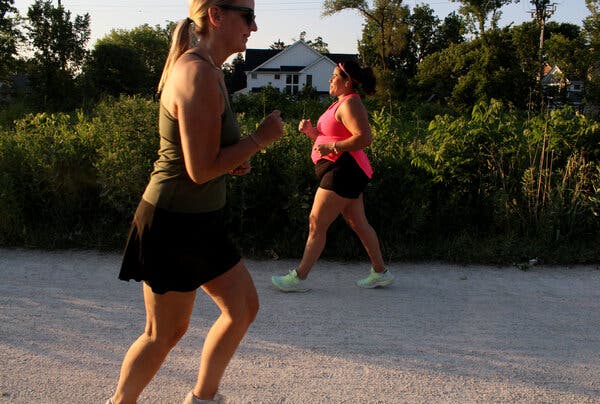걷기운동의 효과
페이지 정보
작성자 김민준기자 작성일22-07-30 11:22 댓글0건본문

[HYP-김민준 기자]
지난 몇 년 동안, 전 세계 사람들이 걷는 것을 바라보는 시각에 뚜렷한 변화가 있었다. 요즘, 수백만 명의 사람들이 그들의 신체 건강, 다른 사람들과의 연결감, 그리고 심리적인 행복을 향상시키기 위해 그들의 지역사회에서 보도와 산책로를 택하고 있다. 점점 더 많은 연구에 따르면, 걷는 것으로부터 상당한 정신적, 육체적 이익을 경험하는 데 필요한 모든 것은 매일 최소 30분 동안 그렇게 해야 한다. 하지만, 수많은 발걸음을 내딛기 위해 같은 평범한 포장도로를 돌아다니는 것은 한때 일상의 즐거움이었던 것을 곧 지루한 일로 바꿀지도 모른다.
걷기 운동을 레벨업하는 과정에서 꾸준한 페이스를 유지하고 꾸준히 하는 것이 중요하다. 이것과 건강한 삶의 방식, 그리고 지지적인 환경 사이에서 균형을 잡는 것도 필요하다. 이것은 영양분이 풍부한 식사를 하고, 적절한 수면을 취하고, 긍정적인 태도를 가진 사람들과 관계를 맺는 것을 포함할 수 있다.
걷기 운동의 중요성
걷기는 신체적, 심리적 이점을 결합한다. 운동이 우리 몸에 미치는 긍정적인 영향 외에도, 이 활동은 우리의 정신적, 정서적 건강에도 적합하다. 걷기와 같은 규칙적인 신체 활동은 심각한 우울증과 같은 만성 정신 건강 장애와 관련된 증상을 완화하는 데 도움이 될 수 있다(Aspinall et al., 2015).
걷기는 뇌와 몸 전체에 흐르는 혈액의 양을 증가시키기 때문에 기분을 개선하는데 도움이 됩니다. 흔히 중추신경 반응계로 알려진 시상하부-하수체-아드레날린(HPA) 축은 그것의 존재로 인해 긍정적인 영향을 받는다. HPA 축은 스트레스에 대한 효율적인 반응 뒤에 있는 생리학적 메커니즘이기 때문에 이것은 좋은 소식이다. 걷기는 사람들이 신경을 이완시켜 불안감을 덜 느끼게 해주기 때문에 완벽한 운동이다.
누구나 친구들과 함께 그 활동에 참여하도록 격려함으로써 산책을 가는 것의 이점을 배가시킬 수 있다. 일주일에 하루나 이틀만 다른 사람들과 함께 걷는 것은 여러분의 건강에 큰 도움이 될 수 있습니다. 그것은 신체 활동과 즐거운 사회적 연결을 통해 나쁜 기분을 증진시키고, 슬픔을 물리치고, 자존감을 높일 수 있다. (Aspinall et al., 2015). 나는 일주일에 세 번, 각각 10분에서 30분 정도 걷기로 한다. 나는 걷기 레벨 업의 다양한 이점에 대해 읽고 나서 이 운동 시스템에 정착했다. 걷기는 다양한 건강상의 이점을 제공한다. 다음은 걷기 운동의 수준을 높이기로 결정한 가장 전형적인 예들입니다.
(i) 더 건강한 수면
(ii) 체력의 증대
(iii) 스트레스와 불안의 감소 기분 개선 힘과 동기 부여의 증가
(iv) 피로의 감소, 정신적 성과 향상으로 이어질 수 있음
(v) 체중감량
(vi) 콜레스테롤 수치 감소 및 심혈관 시스템(심장)의 건강 증진
러닝머신을 사용하기보다는 밖으로 나가 걷는 것이 심리적 건강에 미치는 긍정적인 영향을 활용하는 가장 효율적인 접근법이다(Aspinall et al., 2015). 임상적 우울증과 같은 질병으로 어려움을 겪고 있는 일부 환자들은 의사가 약을 복용하고 생활습관을 조정하는 것 외에도 자연에서 시간을 보낼 것을 권고하도록 하고 있다.

신체 활동에 관해서라면 너무 복잡할 필요는 없다. 사람들은 매일 활기찬 산책을 하는 것처럼 쉬운 일을 함으로써 건강한 삶을 살 수 있습니다. 예를 들어, 사람들은 다음과 같은 여러 가지 방법으로 꾸준히 빠른 걸음으로 이득을 볼 수 있다.
(i) 건강한 체중을 유지하고 체내의 지방을 줄이세요.
(ii) 심혈관질환, 뇌졸중, 고혈압, 악성종양, 제2형 당뇨병 등 각종 질병과 질환을 예방하거나 통제하기 위한 조치를 취한다.
(iii) 심혈관 건강 증진
(iv) 근육조직과 골격구조를 공고히 한다.
(v) 힘과 지구력 강화
(vi) 에너지 수준을 높입니다.
(vi) 전반적인 기분, 지성, 기억력을 계속해서 향상시키세요.
(viii) 면역기능 증진
(ix) 일상생활에서의 스트레스와 스트레스를 줄여라.
보행의 장점은 보행자의 속도, 거리, 활동 빈도에 비례하여 증가한다. 예를 들어, 누군가는 평균 비율의 보행자로서 그들의 산책 여행을 시작할 수 있다. 그럼에도 불구하고, 시간이 지남에 따라 그들은 일반 보행자들보다 더 빠른 속도로 걷고 1마일을 짧은 시간 내에 완료하여 슈퍼 워커들과 견줄 만한 결과를 얻을 수 있다(Slentz et al., 2004). 이것은 유산소 운동을 얻고, 전반적인 심장 건강을 증진시키고, 좀 더 편안한 속도로 걷는 간격을 두고 빠르게 걷는 훌륭한 방법이 될 수 있다.
Over the past couple of years, there has been a discernible shift in how people around the world view walking. These days, millions of people are taking to the pavements and walking paths in their communities to improve their physical fitness, sense of connection to others, and psychological well-being. According to a growing body of research, all required to experience significant mental and physical benefits from walking are to do so for at least half an hour each day (Pennington, 2020). However, walking around on the same mundane pavement for countless steps may soon transform what was once a daily joy into tedious work.
As part of leveling up the walking exercises, it is essential to maintain a steady pace and do it consistently. It is also necessary to strike a balance between this and a healthy way of life and a supportive environment (Pennington, 2020). This may involve eating a diet rich in nutrients, obtaining adequate sleep, and associating oneself with people with a positive attitude.
Importance of Walking Exercises
Walking combines the benefits of physical and psychological. In addition to the positive effects of exercise on our bodies, this activity is also suitable for our mental and emotional health. Regular physical activity, such as walking, can help alleviate symptoms associated with chronic mental health disorders, such as severe depression (Aspinall et al., 2015).
The mental benefits of Walking exercises
Walking helps to improve moods because it improves the amount of blood that flows to the brain and throughout the body. The hypothalamic-pituitary-adrenal (HPA) axis, often known as the central nerve response system, is positively affected due to its presence. This is excellent news because the HPA axis is the physiological mechanism behind an efficient response to stress. Walking is a perfect exercise because it helps people relax their nerves, making them feel less anxious.
Anyone can multiply the benefits of going for a walk by encouraging their friends to accompany them in the activity. Walking with other people just one or two days a week can hugely benefit your health. It can enhance bad moods, fight off sadness, and boost one's self-esteem through physical activity and pleasant social connections (Aspinall et al., 2015). I make it a point to walk a week thrice for bouts ranging from ten to thirty minutes each. I settled on this exercise regime after reading on the various benefits of leveling up walking. Walking offers a wide variety of health advantages. The following are some of the most typical examples behind my decision to level up my walking exercises:
(i) Healthier sleeping
(ii) Greater stamina
(iii) Reduced levels of stress and anxiety Improved mood Increased levels of strength and motivation
(iv) A reduction in fatigue, which can lead to an improvement in mental performance
(v) Loss of weight
(vi) decreased levels of cholesterol and increased health of the cardiovascular system (the heart)
Going outside to walk rather than using a treadmill is the most efficient approach to take advantage of the positive effects that walking has on one's psychological health (Aspinall et al., 2015). Some patients who are struggling with diseases such as clinical depression are even having their physicians recommend that they spend time in nature, in addition to taking medicine and making other adjustments to their lifestyle.
Physical Benefits of Leveled-up Walking
There's no need to overcomplicate things when it comes to physical activity. People can enable themselves to live a healthy life by doing something as easy as going for a brisk walk every day. People can benefit from consistent brisk walking, for example, in several ways:
(i) Keep a healthy body weight and cut down on the fat in your body.
(ii) Take measures to avoid or control various diseases and disorders, such as cardiovascular illness, stroke, hypertension, malignancies, and type 2 diabetes.
(iii) Enhance cardiovascular health
(iv) Consolidate the musculature and the skeletal structure.
(v) Enhance strength and endurance
(vi) Raise the levels of energy.
(vii) Continue improving overall mood, intellect, and memory.
(viii) Promote immune function
(ix) Reduce the stress and strain in daily life.
The advantages of walking increase proportionately with the walker's speed, distance, and frequency of activity. For instance, someone may begin their strolling journey as a walker of the average rate. Still, with time they may work their way up to walking at a faster pace and completing a mile in a shorter timeframe than an ordinary walker, achieving results comparable to those of super walkers (Slentz et al., 2004). This can be an excellent way to obtain aerobic exercise, enhance overall heart health, and f rapid walking with intervals of walking at a more relaxed pace.
사진출처-뉴욕타임즈
댓글목록
등록된 댓글이 없습니다.







